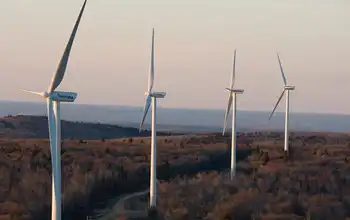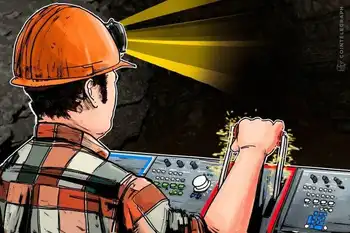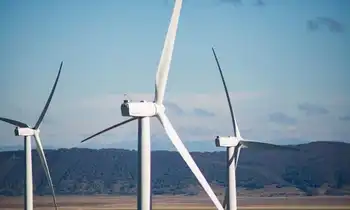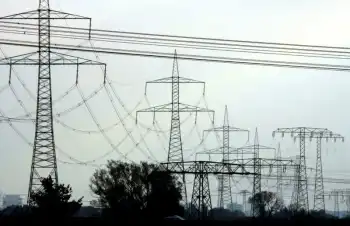Nuclear costs pressuring the industry
Like it or hate it, trust it or fear it, embrace it or protest it, nuclear power production on this planet is here and likely to grow.
The bigger question is, by how much?
Resource, labour and regulatory constraints continue to draw attention to the risks and uncertainties of building new nuclear reactors, and as North American utilities start digging into the details they're finding expansion of their nuclear fleets are likely to cost much more than originally thought.
And that's ignoring any impacts the current credit crunch could have on financing these massive projects.
It was reported that Progress Energy, a utility in Raleigh, N.C., expects to pay more than $9.3 billion (US) for two nuclear reactors, more than double the previous $4.4 billion estimate disclosed as recently as February.
Over in Finland, energy group Teollisuuden Voima is now saying a next-generation reactor being built by France's Areva SA could be delayed until 2012, three years behind schedule. Already, the Olkiluoto 3 plant is reportedly $2 billion over budget since construction began in 2005. A big part of the problem is labour shortages in a highly specialized industry and rising material costs. Ontario's Energy and Infrastructure Minister George Smitherman, asked recently about the ballooning nuclear costs, said it wasn't fair to target one industry.
"Everything is under pressure on a cost basis. Talk to the wind-turbine guys," said the minister, referring to rising steel and transportation costs affecting the wind-turbine manufacturers. "So yes, in any environment where there are resources that are scarce or under pressure, absolutely, there are pressures around cost increases. But they're not germane only to the nuclear world."
A valid point, though it's generally accepted the nuclear industry is being hit much harder. Credit-rating agency Standard & Poor's released a report confirming this position.
"We expect that capital costs for nuclear projects will be significantly higher than what we have seen in the power industry thus far," said the agency, referring to the unique labour and material costs associated with nuclear development. "The nuclear construction industry will be particularly prone to price spurts from transportation bottlenecks and fuel-price swings because nuclear units require a significantly higher amount of material than do other types of power assets."
Complicating the risks even more, it said, was a "scanty construction track record for the new technologies and an untested regulatory process." The nuclear industry knows it. At a World Nuclear Association conference in London last month, executives said costs have jumped so quickly they no longer wanted to publicly commit to estimates.
S&P pegs the latest cost of building a new nuclear reactor at $5,000 to $8,000 per kilowatt. That's pretty much in line with the $7,000 per kilowatt figure Moody's Investors Service, another credit-rating agency, estimated in May.
It means Ontario, where a new nuclear plant at Darlington would be at least 2,000 megawatts in size, can expect to pay between $10 billion (US) and $16 billion — assuming there are no cost overruns.
Compare that the $3,000 per kilowatt "conservative" estimate the Ontario Power Authority used in its 20-year Integrated Power System Plan, which from a cost perspective has become quite dated. Based on that figure, a 2,000-megawatt plant would cost $6 billion (Canadian).
The Association of Major Power Consumers in Ontario, in filings to the energy regulator, said the power authority's assumptions need a reality check.
"Given Ontario's history with nuclear and Candu technology in particular, the (agency's) supposition that there is any plausible scenario where this generating commodity comes to market at or under budget verges on the absurd," it contended.
And this excludes the impact of a Finland-style delay on Ontario's power system plan. What happens if a 2,000-megawatt plant that's supposedly crucial to keeping the lights on also faces a multi-year delay? It means burning more natural gas and importing more coal-fired electricity at much higher cost – to ratepayers, to the climate, to public health.
Amir Shalaby, vice-president of system planning at the power authority, knows costs have gone up, but he's not prepared to talk about how far, or the potential impact on the province's nuclear ambitions.
"We don't know what the price is at this time," he said in a recent interview. "The government is going through a request for proposals. That will determine what the deal is on nuclear costs."
The agency, in regulatory documents, has hinted that costs of reactors start getting uneconomic compared with natural gas plants at about $3,600 per kilowatt.
Bids aren't in until the end of the year so the government can claim ignorance until then. Even so, it's unlikely it will disclose this "proprietary" information right away. A decision on who will build Ontario's new nuclear plant – Atomic Energy of Canada, Areva or Westinghouse – isn't coming until the end of next March.
Meanwhile, Ontario Power Generation has started looking at ways to pay for the new plant. The crown corporation stated in its last quarterly earnings that it plans soon to "pursue cost-recovery mechanisms and explore financing options for the new nuclear reactors."
Asked what options are on the table, OPG told the Star it was "too premature" to comment. What is known is amendments to the Power Corporation Act now allow the company to recoup costs from consumers over several years while the new plant is being built.
It means consumers could see a charge on their bill to pay for something that won't be delivering electricity until 2018, at best. Regulators have already approved such an approach in the United States. Most recently, utilities Florida Power & Light and Progress Energy have been granted approval to increase their rates beginning in January to pay for nuclear plants that won't start generating power until 2016.
Hugh MacDiarmid, chief executive of Atomic Energy of Canada, said at a nuclear energy conference in Paris last week that it's imperative for the industry to gain public confidence as it enters this new phase of growth.
"The new global economic circumstances will undoubtedly place increased pressure on the nuclear industry to deliver projects on time, on budget and reflect the best economies of power generation."
Comforting words that are becoming increasingly difficult to back up. Not surprisingly, the anti-nuke folks have seized on the issue, because it resonates with the business community just as much as with the tree huggers.
Related News

TransAlta brings online 119 MW of wind power in US
CALGARY - TransAlta Renewables Inc says two US wind farms, with a total capacity of 119 MW and operated by its parent TransAlta Corp, became operational in December.
The 90-MW Big Level wind park in Pennsylvania started commercial operation on December 19. It sells power to technology giant Microsoft Corporation under a 15-year contract.
The 29-MW Antrim wind facility in New Hampshire is operational since December 24. It is selling power under 20-year contracts with Boston-based non-profit hospital and physicians network Partners Healthcare and New Hampshire Electric Co-op.
The Canadian renewable power producer, which has economic interest in the two wind parks, said…





